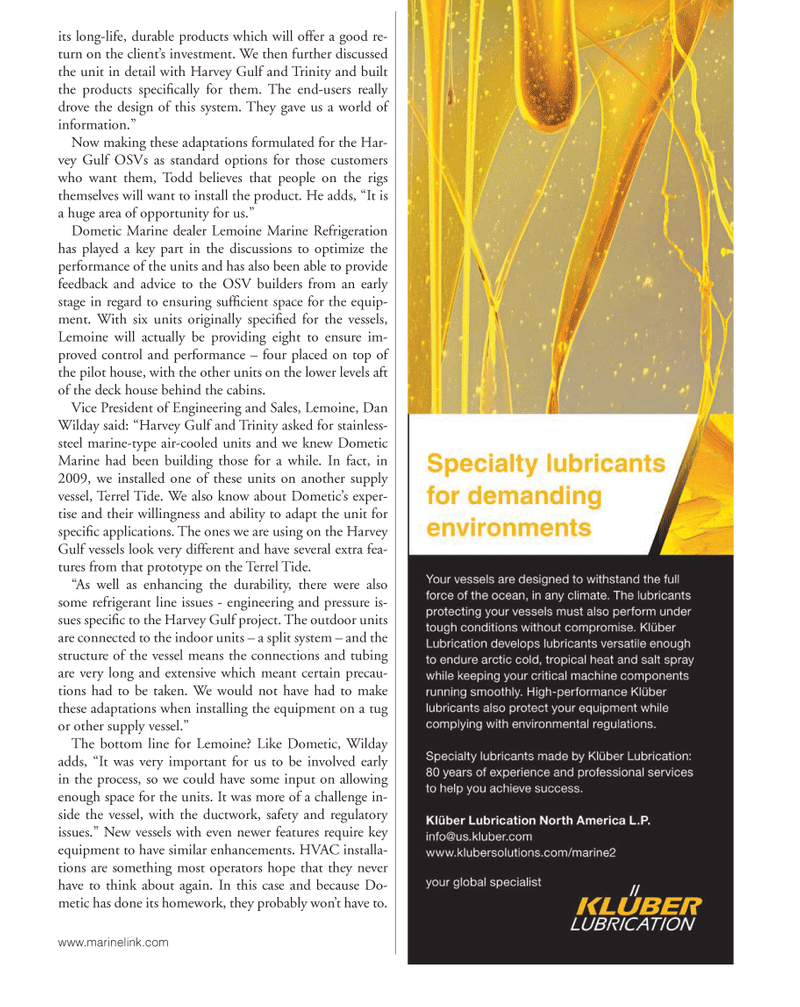
Page 41: of Marine News Magazine (August 2013)
Salvage & Response
Read this page in Pdf, Flash or Html5 edition of August 2013 Marine News Magazine
its long-life, durable products which will offer a good re- turn on the clients investment. We then further discussed the unit in detail with Harvey Gulf and Trinity and built the products speci? cally for them. The end-users really drove the design of this system. They gave us a world of information.?Now making these adaptations formulated for the Har- vey Gulf OSVs as standard options for those customers who want them, Todd believes that people on the rigs themselves will want to install the product. He adds, It is a huge area of opportunity for us.? Dometic Marine dealer Lemoine Marine Refrigeration has played a key part in the discussions to optimize the performance of the units and has also been able to provide feedback and advice to the OSV builders from an early stage in regard to ensuring suf? cient space for the equip- ment. With six units originally speci? ed for the vessels, Lemoine will actually be providing eight to ensure im- proved control and performance ? four placed on top of the pilot house, with the other units on the lower levels aft of the deck house behind the cabins.Vice President of Engineering and Sales, Lemoine, Dan Wilday said: Harvey Gulf and Trinity asked for stainless- steel marine-type air-cooled units and we knew Dometic Marine had been building those for a while. In fact, in 2009, we installed one of these units on another supply vessel, Terrel Tide. We also know about Dometics exper- tise and their willingness and ability to adapt the unit for speci? c applications. The ones we are using on the Harvey Gulf vessels look very different and have several extra fea- tures from that prototype on the Terrel Tide. As well as enhancing the durability, there were also some refrigerant line issues - engineering and pressure is- sues speci? c to the Harvey Gulf project. The outdoor units are connected to the indoor units ? a split system ? and the structure of the vessel means the connections and tubing are very long and extensive which meant certain precau- tions had to be taken. We would not have had to make these adaptations when installing the equipment on a tug or other supply vessel.? The bottom line for Lemoine? Like Dometic, Wilday adds, It was very important for us to be involved early in the process, so we could have some input on allowing enough space for the units. It was more of a challenge in- side the vessel, with the ductwork, safety and regulatory issues.? New vessels with even newer features require key equipment to have similar enhancements. HVAC installa- tions are something most operators hope that they never have to think about again. In this case and because Do- metic has done its homework, they probably wont have to. www.marinelink.com MN August2013 Layout 32-49.indd 417/23/2013 7:26:58 PM

 40
40

 42
42
